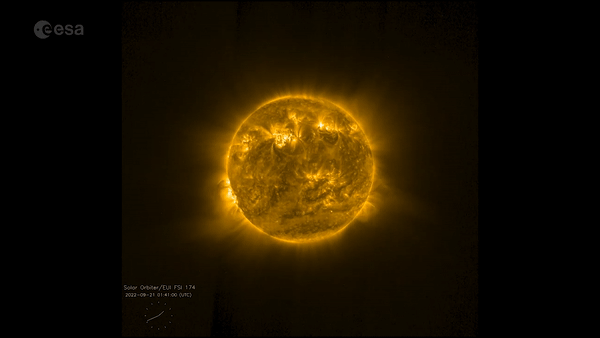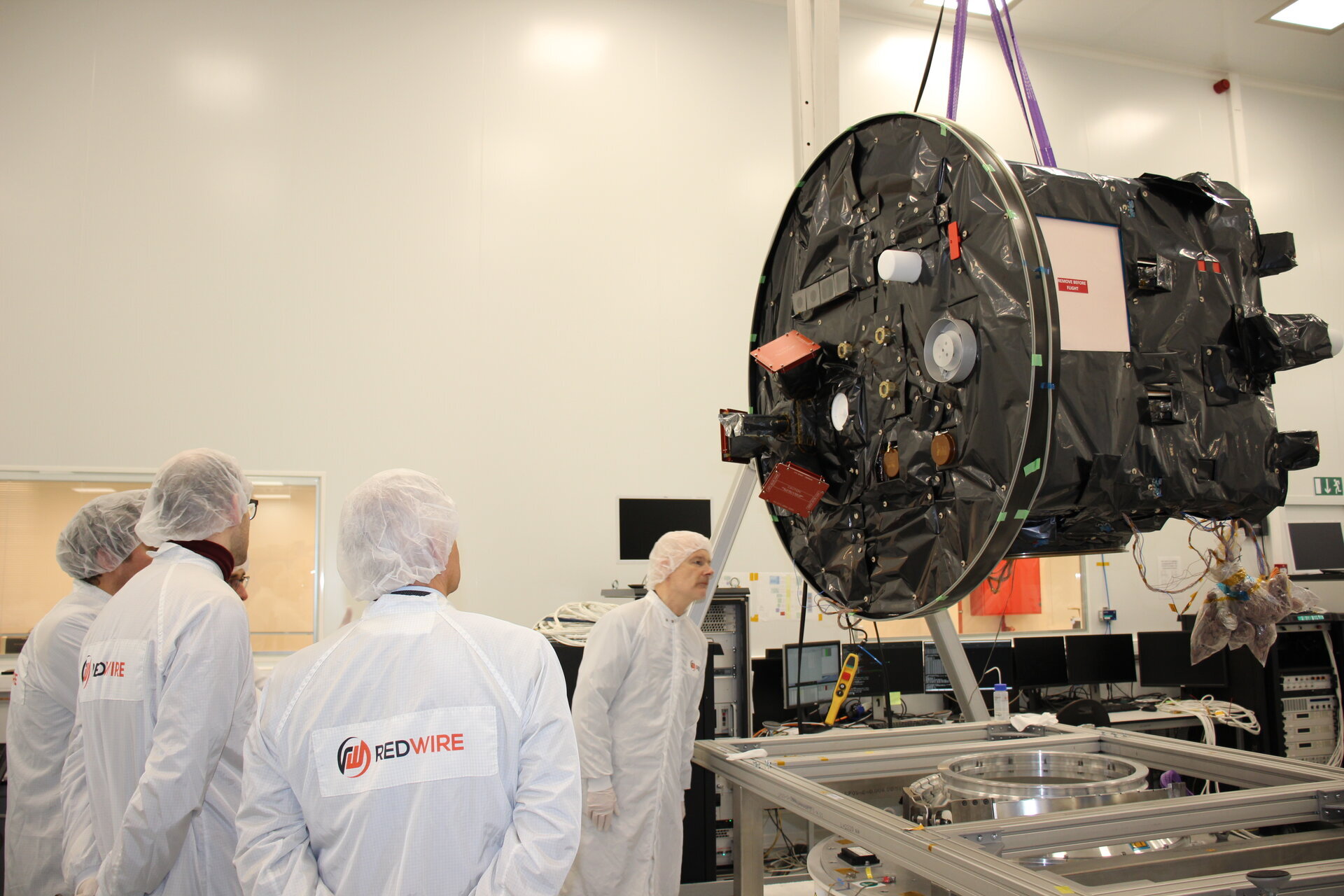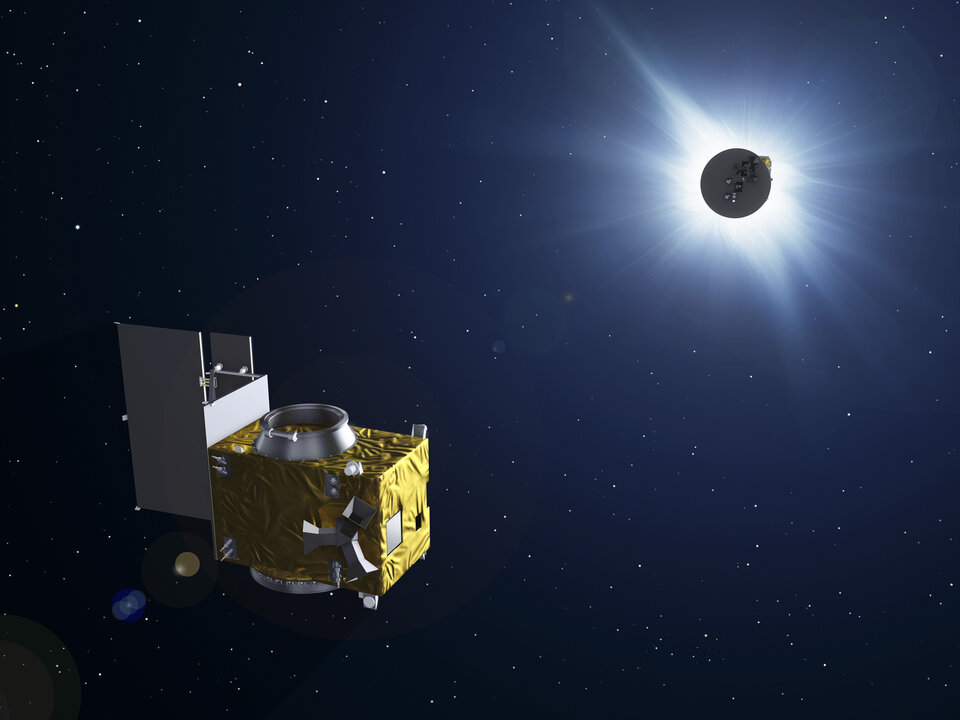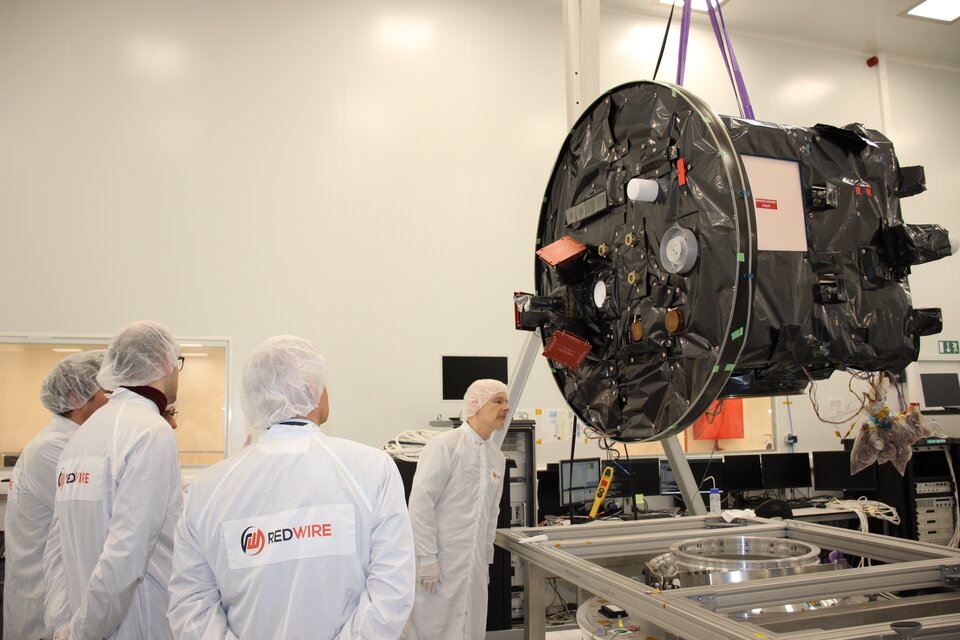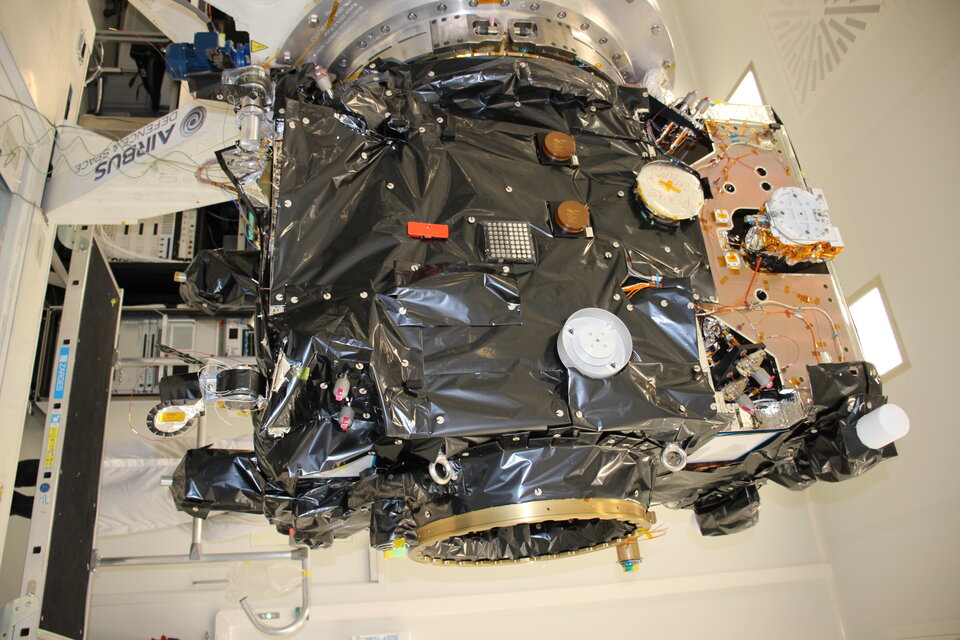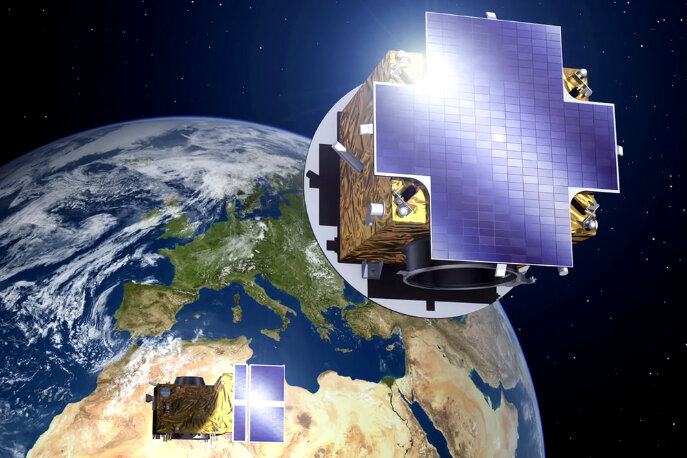6.09.2022
Coronal mass ejection hits Solar Orbiter before Venus flyby
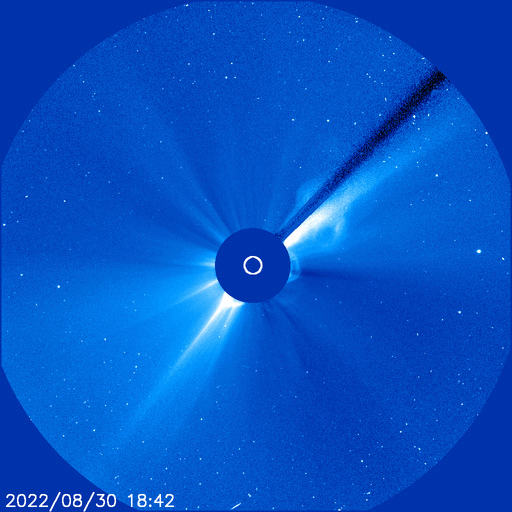
In brief
In the early hours of Sunday, 4 September, Solar Orbiter flew by Venus for a gravity-assist manoeuvre that alters the spacecraft’s orbit, getting it even closer to the Sun. As if trying to get the orbiter’s attention as it cosied up to another body in the Solar System, the Sun flung an enormous 'coronal mass ejection' straight at the spacecraft and planet just two days before their closest approach – and the data are revealing.
In-depth
On 30 Aug, a large coronal mass ejection shot from the Sun in the direction of Venus. Not long later, the storm arrived at the second planet from the Sun. As the data continues to come in from Solar Orbiter, this strike reveals why ‘in situ’ monitoring of space weather and its effects on the bodies, and spacecraft, of the Solar System are so important.

Fortunately, there were no negative effects on the spacecraft as the ESA-NASA solar observatory is designed to withstand and in fact measure violent outbursts from our star – although Venus doesn’t always get off so lightly. Coronal mass ejections have a tendency of eroding Venus’ atmosphere, stripping off gasses as they whoosh by.
Fly high with Venus fly by
Solar Orbiter is a quarter of the way through its decade-long mission to observe the Sun up close and get a look at its mysterious poles. Its orbit was chosen to be in close resonance with Venus, meaning it returns to the planet’s vicinity every few orbits to use its gravity to alter or tilt its orbit.


Access the video
This third flyby of Venus took place on Sunday at 01:26 UTC, when Solar Orbiter passed 12 500 km from the planet’s centre, which is very roughly 6 000 km from its gassy ‘surface’. In other words, it passed a distance half the width of Earth.
Its distance from Venus, angle of approach and velocity were meticulously planned to get the exact desired effect from the planet’s large gravitational pull – getting it closer to the Sun than ever before.
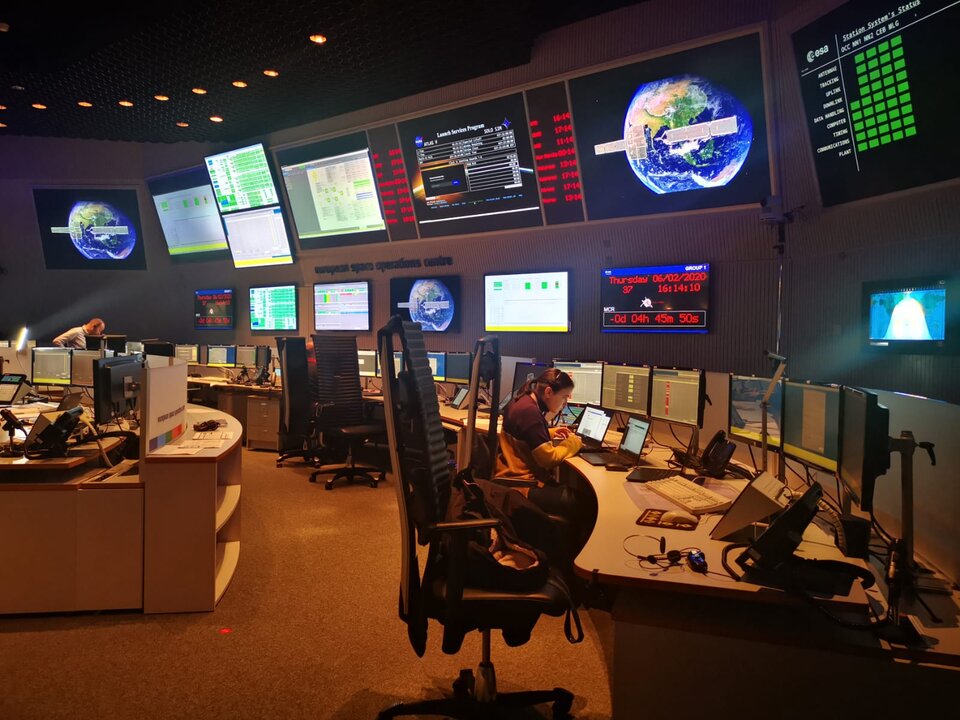
“The close approach went exactly to plan, thanks to a great deal of planning from our colleagues in Flight Dynamics and the diligent care of the Flight Control Team”, explains Jose-Luis Pellon-Bailon, Solar Orbiter Operations Manager.
“By trading ‘orbital energy’ with Venus, Solar Orbiter has used the planet’s gravity to change its orbit without the need for masses of expensive fuel. When it returns to the Sun, the spacecraft’s closest approach will be about 4.5 million km closer than before.”
Understanding particles that pose a radiation risk
Data beamed home since Solar Orbiter encountered the solar storm shows how its local environment changed as the large CME swept by. While some instruments had to be turned off during its close approach to Venus, in order to protect them from stray sunlight reflected off of the planet’s surface, Solar Orbiter’s ‘in situ’ instruments remained on, recording among other things an increase in solar energetic particles.

Particles, mostly protons and electrons, but also some ionised atoms like Helium, are emitted by the Sun all the time. When particularly large flares and ejections of plasma are shot from the Sun, these particles are picked up and carried with them, accelerated to near relativistic speeds. It is these particles that pose a radiation risk to astronauts and spacecraft.
Improving our understanding of CMEs and tracking their progress as they breeze through the Solar System is a big part of Solar Orbiter’s mission. By observing CMEs, the solar wind and the Sun’s magnetic field, the spacecraft’s ten science instruments are providing new insight into how the 11-year cycle of solar activity works. Ultimately, these findings will help us better predict periods of stormy space weather and protect planet Earth from the Sun’s violent outbursts.
Goodbye, halo?
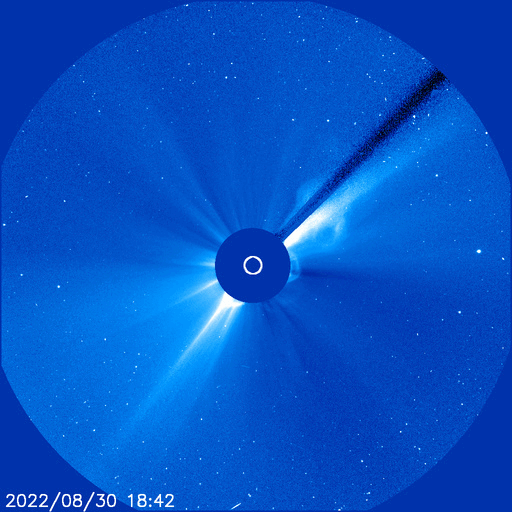
This recent CME illustrates a difficulty in space weather observations. As seen in this footage from SOHO, a ‘full halo’ is visible when a CME is either coming straight at Earth, or in this case heading directly away, from the ‘far side’ of the Sun.
Determining if coronal mass ejections are coming towards Earth or away is tricky when viewed from Earth, because in both cases it appears to be expanding. One of the many benefits of the coming Vigil mission is that by combining the images taken from Earth direction and Vigil’s position at the ‘side’ of the Sun, the fifth Lagrange point, distinguishing between an oncoming or departing storm will be easy and reliable.
Space weather gets deep
The Sun exerts its influence on all the bodies of the Solar System. It’s the reason why no life could survive on the inner planets, the temperatures being too hot and their atmospheres having been stripped away long ago.
As we venture from Earth to the Moon, its vital we understand how space weather can affect human bodies, robots, communication systems and plants and animals.
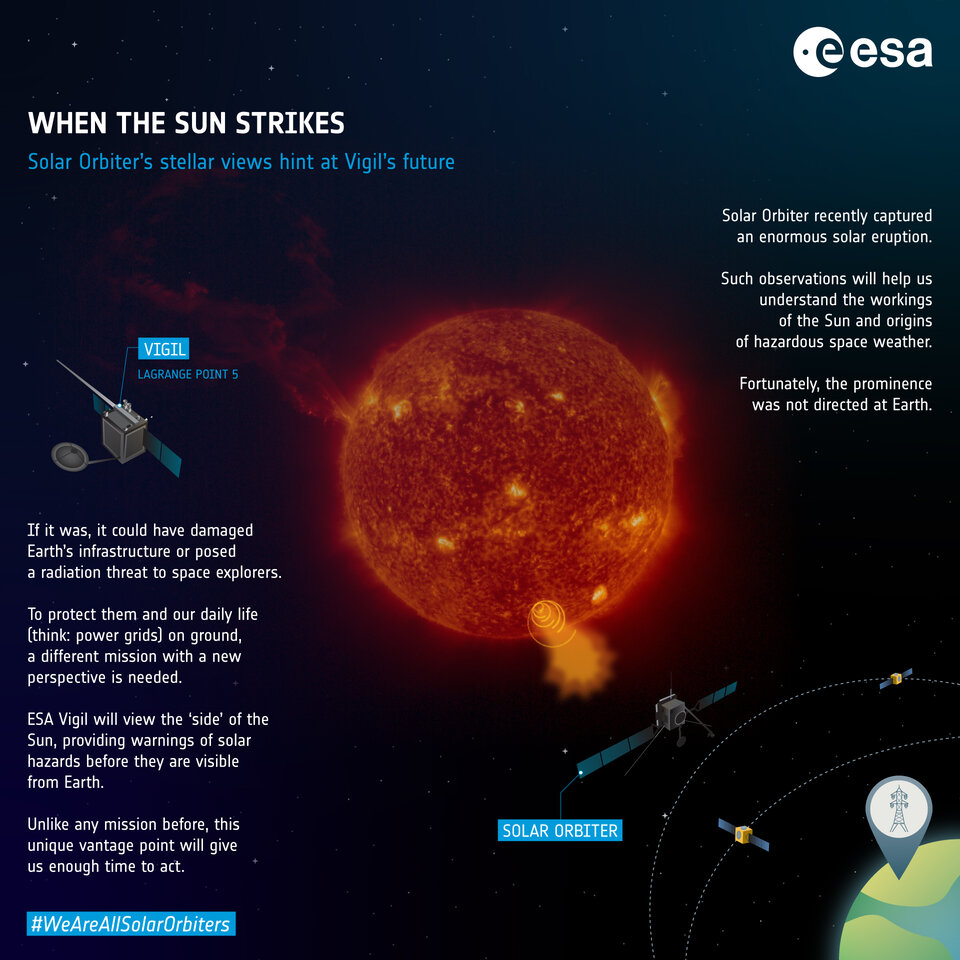
As well as a range of tools to understand the Sun’s effect on Earth infrastructure, ESA’s Space Weather Service Network currently alerts teams flying missions throughout the Solar System of extreme space weather, with forecasts for Mercury, Venus and Mars freely available via the Network’s Portal, and Jupiter on the way.
“Gathering data on events like this is crucial to understanding how they arise, improving our space weather models, forecasts and early-warning systems,” explains Alexi Glover, ESA Space Weather Service Coordinator.
“Solar Orbiter is providing us with an excellent opportunity to compare our forecasts with real observations and test how well our models and tools perform for these regions”.
Quelle: ESA
----
Update: 13.09.2022
.
Solar Orbiter solves magnetic switchback mystery
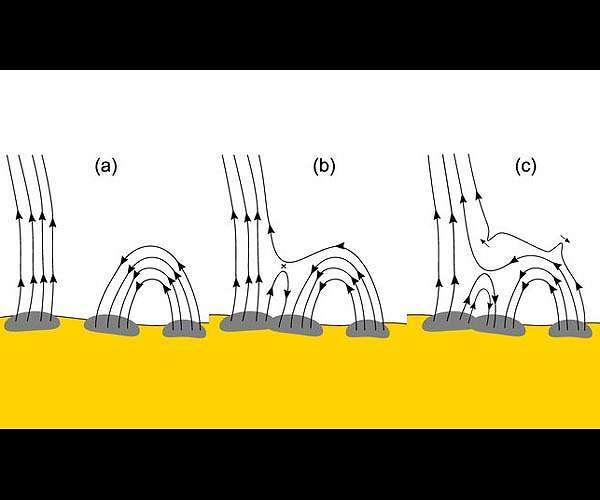
Metis observation of the switchback is consistent with the sound theoretical mechanism for the production of solar magnetic switchbacks proposed in 2020 by Prof. Gary Zank. The key observation was that the switchback could be seen emanated from above a solar active region. This sequence shows the chain of events that the researchers think is taking place. (a) Active regions on the Sun can feature open and closed magnetic field lines. The closed lines arch up into the solar atmosphere before curving round back into the Sun. The open field lines connect with the interplanetary magnetic field of the Solar System. (b) When an open magnetic region interacts with a closed region, the magnetic field lines can reconnect, creating an approximately S-shape field line and producing a burst of energy. (c) As the field line responds to the reconnection and the release of energy, a kink is set propagating outwards. This is the switchback. A similar switchback is also sent in the opposite direction, down the field line and into the Sun.
-
With data from its closest pass of the Sun yet, the ESA/NASA Solar Orbiter spacecraft has found compelling clues as to the origin of magnetic switchbacks, and points towards how their physical formation mechanism might help accelerate the solar wind.
Solar Orbiter has made the first ever remote sensing observation consistent with a magnetic phenomenon called a solar switchback - sudden and large deflections of the solar wind's magnetic field. The new observation provides a full view of the structure, in this case confirming it has an S-shaped character, as predicted. Furthermore, the global perspective provided by the Solar Orbiter data indicates that these rapidly changing magnetic fields can have their origin near the surface of the Sun.
While a number of spacecraft have flown through these puzzling regions before, in situ data only allow for a measurement at a single point and time. Consequently, the structure and shape of the switchback has to be inferred from plasma and magnetic field properties measured at one point.
When the German-US Helios 1 and 2 spacecraft flew close to the Sun in the mid 1970s, both probes recorded sudden reversals of the Sun's magnetic field. These mysterious reversals were always abrupt and always temporary, lasting from a few seconds to a number of hours before the magnetic field switched back to its original direction.
These magnetic structures were also probed at much larger distances from the Sun by the Ulysses spacecraft in the late 1990s. Instead of a third the Earth's orbital radius from the Sun, where the Helios missions made their closest pass, Ulysses operated mostly beyond the Earth's orbit.
Their number rose dramatically with the arrival of NASA's Parker Solar Probe in 2018. This clearly indicated that the sudden magnetic field reversals are more numerous close to the Sun, and led to the suggestion that they were caused by S-shaped kinks in the magnetic field. This puzzling behaviour earned the phenomenon the name of switchbacks. A number of ideas were proposed as to how these might form.
On 25 March 2022, Solar Orbiter was just a day away from a close pass of the Sun - bringing it within the orbit of planet Mercury - and its Metis instrument was taking data. Metis blocks out the bright glare of light from the Sun's surface and takes pictures of the Sun's outer atmosphere, known as the corona. The particles in the corona are electrically charged and follow the Sun's magnetic field lines out into space. The electrically charged particles themselves are called a plasma.
At around 20:39 UT, Metis recorded an image of the solar corona that showed a distorted S-shaped kink in the coronal plasma. To Daniele Telloni, National Institute for Astrophysics - Astrophysical Observatory of Torino, Italy, it looked suspiciously like a solar switchback.
Comparing the Metis image, which had been taken in visible light, with a concurrent image taken by Solar Orbiter's Extreme Ultraviolet Imager (EUI) instrument, he saw that the candidate switchback was taking place above an active region catalogued as AR 12972. Active regions are associated with sunspots and magnetic activity. Further analysis of the Metis data showed that the speed of the plasma above this region was very slow, as would be expected from an active region that has yet to release its stored energy.
Daniele instantly thought this resembled a generating mechanism for the switchbacks proposed by Prof. Gary Zank, University of Alabama in Huntsville, USA. The theory looked at the way different magnetic regions near the surface of the Sun interact with each other.
Close to the Sun, and especially above active regions, there are open and closed magnetic field lines. The closed lines are loops of magnetism that arch up into the solar atmosphere before curving round and disappearing back into the Sun. Very little plasma can escape into space above these field lines and so the speed of the solar wind tends to be slow here. Open field lines are the reverse, they emanate from the Sun and connect with the interplanetary magnetic field of the Solar System. They are magnetic highways along which the plasma can flow freely, and give rise to the fast solar wind.
Daniele and Gary proved that switchbacks occur when there is an interaction between a region of open field lines and a region of closed field lines. As the field lines crowd together, they can reconnect into more stable configurations. Rather like cracking a whip, this releases energy and sets an S-shaped disturbance traveling off into space, which a passing spacecraft would record as a switchback.
According to Gary Zank, who proposed one of the theories for the origin of switchbacks, "The first image from Metis that Daniele showed suggested to me almost immediately the cartoons that we had drawn in developing the mathematical model for a switchback. Of course, the first image was just a snapshot and we had to temper our enthusiasm until we had used the excellent Metis coverage to extract temporal information and do a more detailed spectral analysis of the images themselves. The results proved to be absolutely spectacular!"
Together with a team of other researchers, they built a computer model of the behavior, and found that their results bore a striking resemblance to the Metis image, especially after they included calculations for how the structure would elongate during its propagation outwards through the solar corona.
"I would say that this first image of a magnetic switchback in the solar corona has revealed the mystery of their origin" says Daniele, whose results are published in a paper in The Astrophysical Journal Letters.
In understanding switchbacks, solar physicists may also be taking a step toward understanding the details of how the solar wind is accelerated and heated away from the Sun. This is because when spacecraft fly through switchbacks, they often register a localised acceleration of the solar wind.
"The next step is to try to statistically link switchbacks observed in situ with their source regions on the Sun," says Daniele. In other words, to have a spacecraft fly through the magnetic reversal and be able to see what's happened on the solar surface. This is exactly the kind of linkage science that Solar Orbiter was designed to do, but it does not necessarily mean that Solar Orbiter needs to fly through the switchback. It could be another spacecraft, such as Parker Solar Probe. As long as the in-situ data and remote sensing data is concurrent, Daniele can perform the correlation.
"This is exactly the kind of result we were hoping for with Solar Orbiter," says Daniel Muller, ESA Project Scientist for Solar Orbiter. "With every orbit, we obtain more data from our suite of ten instruments. Based on results like this one, we will fine-tune the observations planned for Solar Orbiter's next solar encounter to understand the way in which the Sun connects to the wider magnetic environment of the Solar System. This was Solar Orbiter's very first close pass to the Sun, so we expect many more exciting results to come."
Solar Orbiter's next close pass of the Sun - again within the orbit of Mercury at a distance of 0.29 times the Earth-Sun distance - will take place on 13 October. Earlier this month, on 4 September, Solar Orbiter made a gravity assist flyby at Venus to adjust its orbit around the Sun; subsequent Venus flybys will start raising the inclination of the spacecraft's orbit to access higher latitude - more polar - regions of the Sun.
Quelle: SD
----
Update: 13.10.2022
.
The sun crackles in new images from spacecraft preparing for a close flyby

